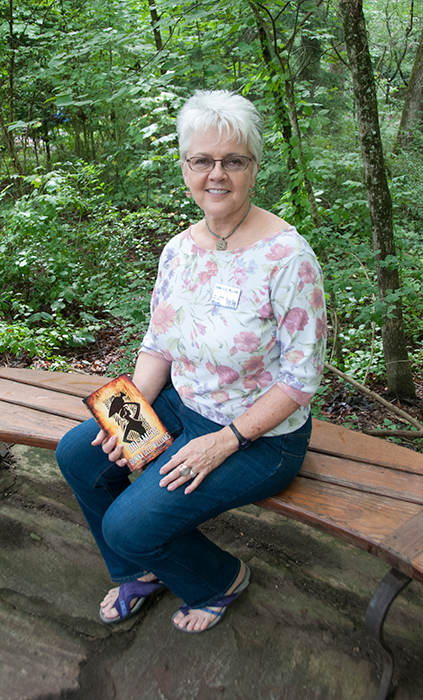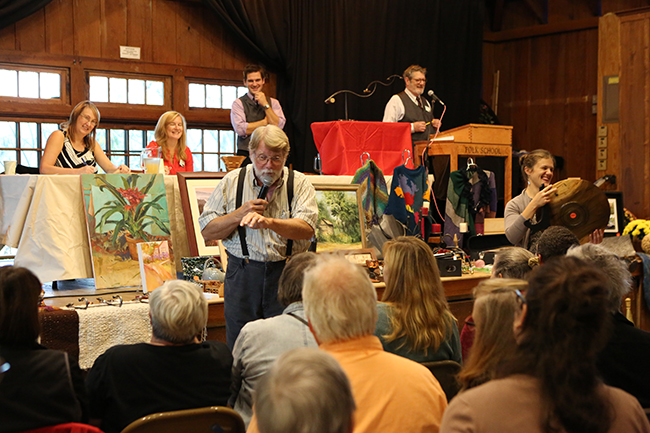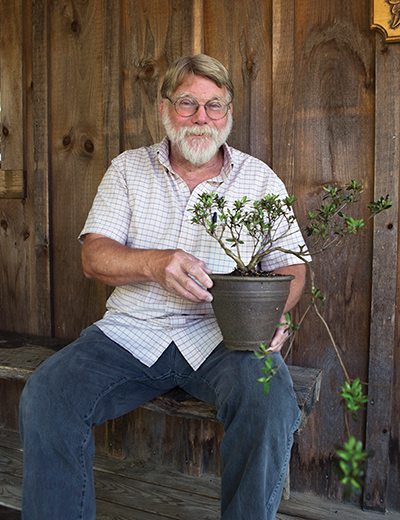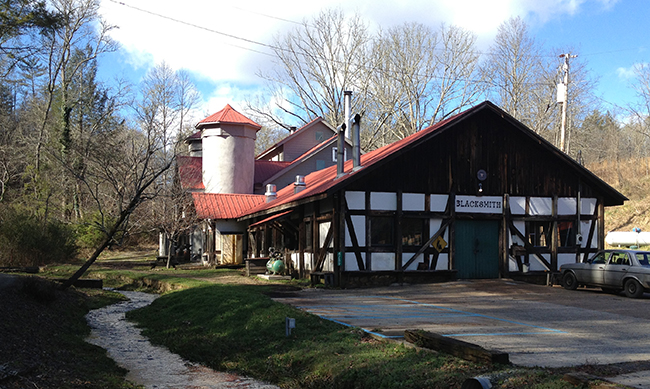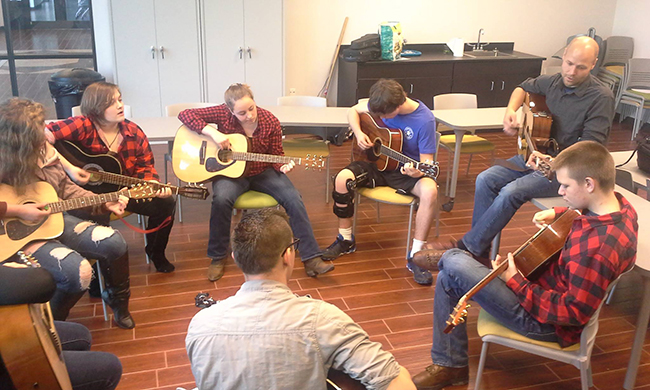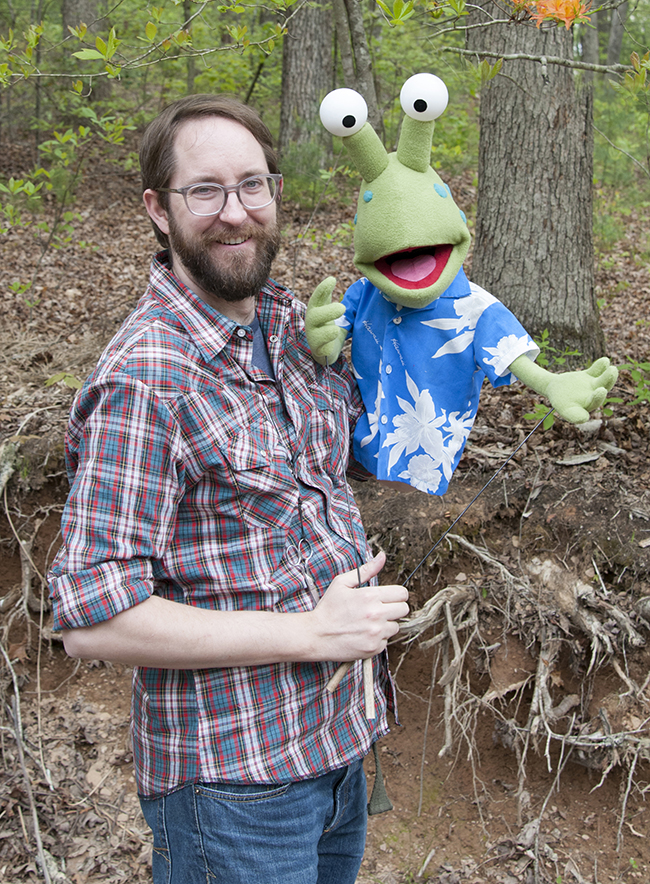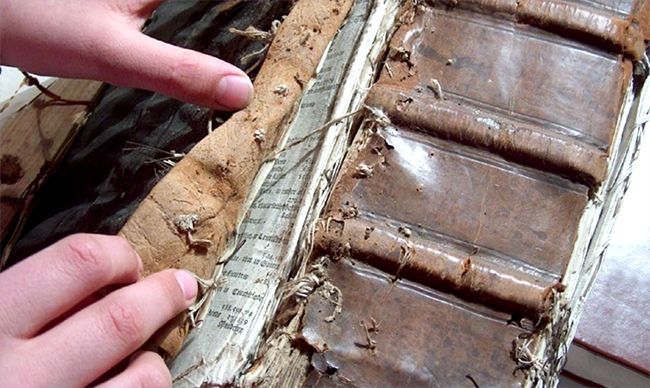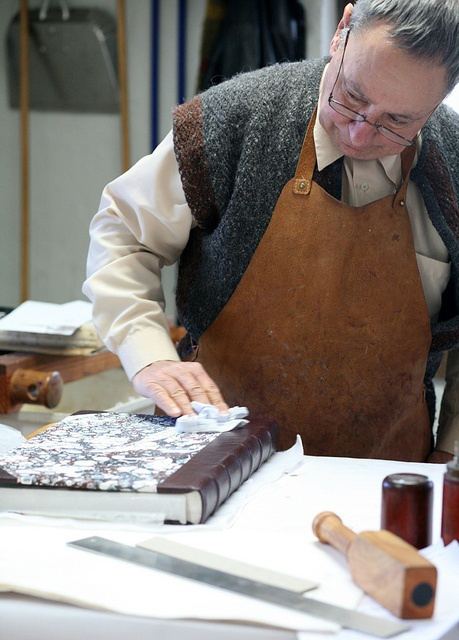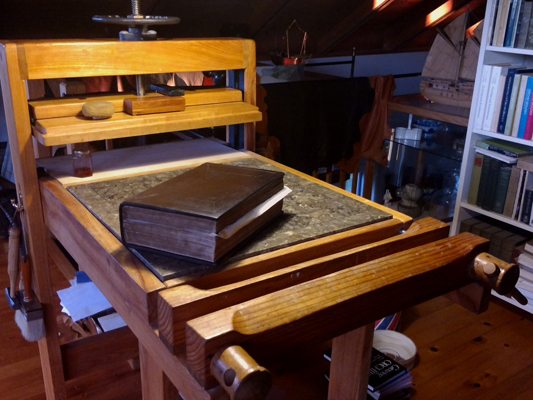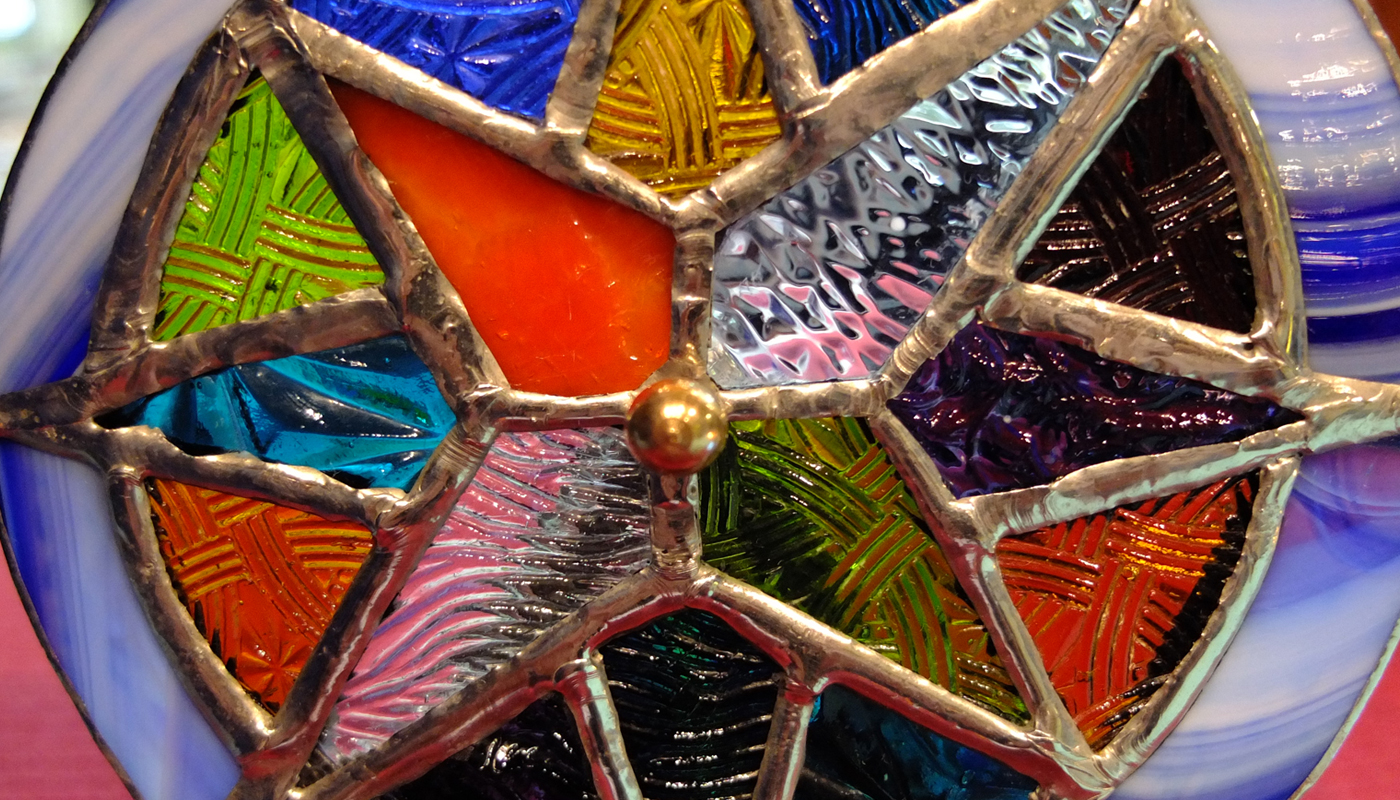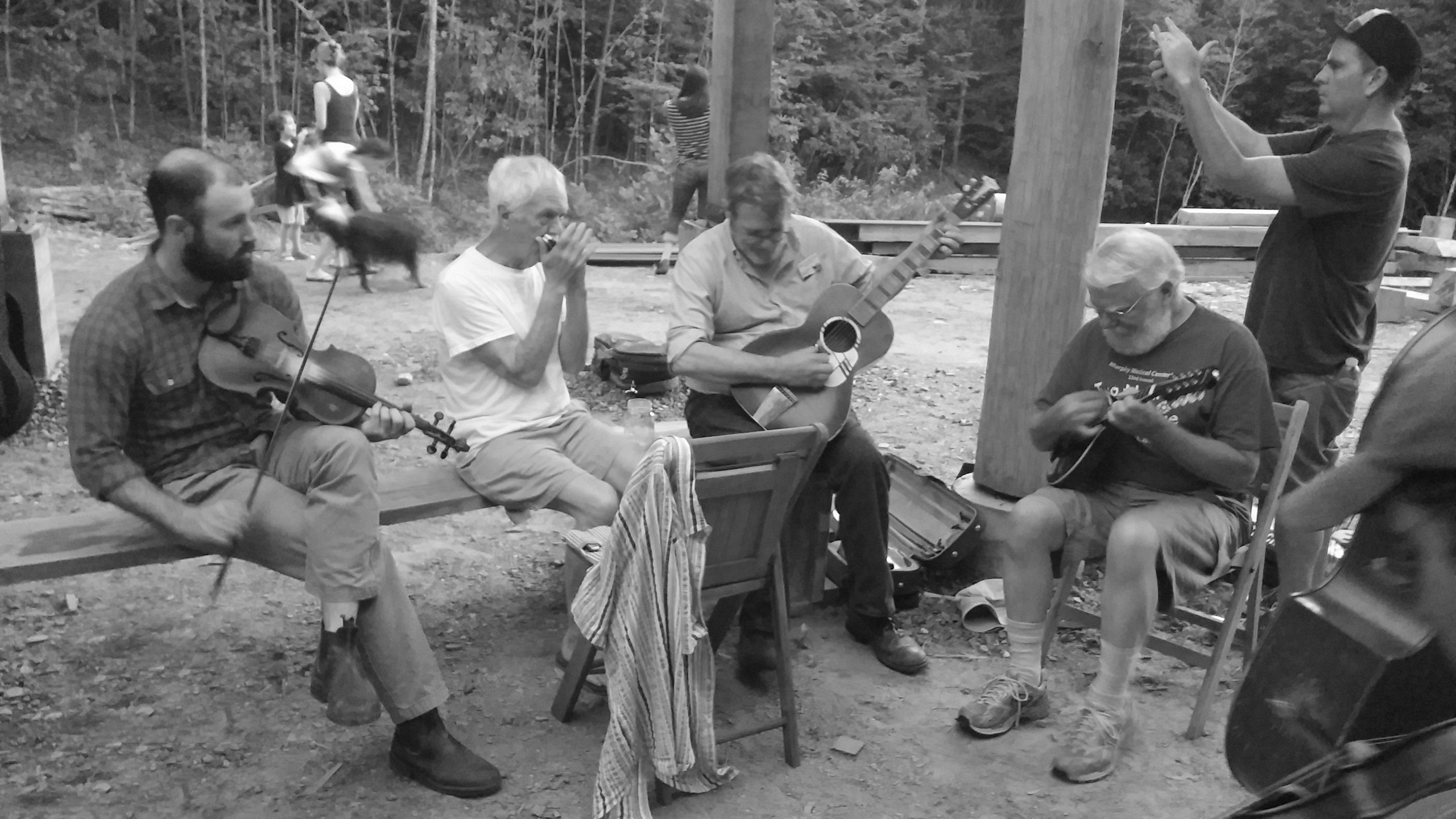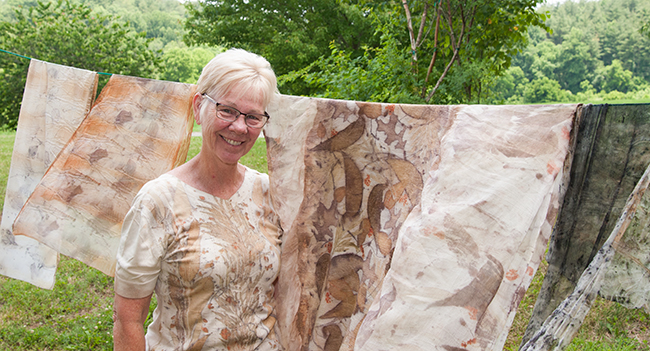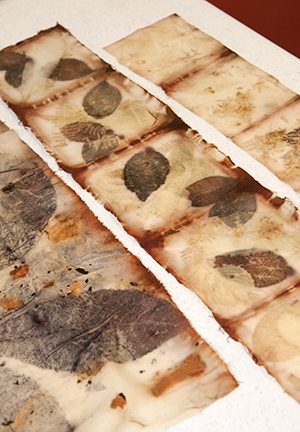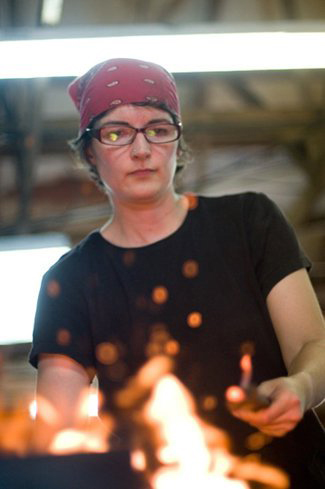[caption id="attachment_13351" align="aligncenter" width="600"]
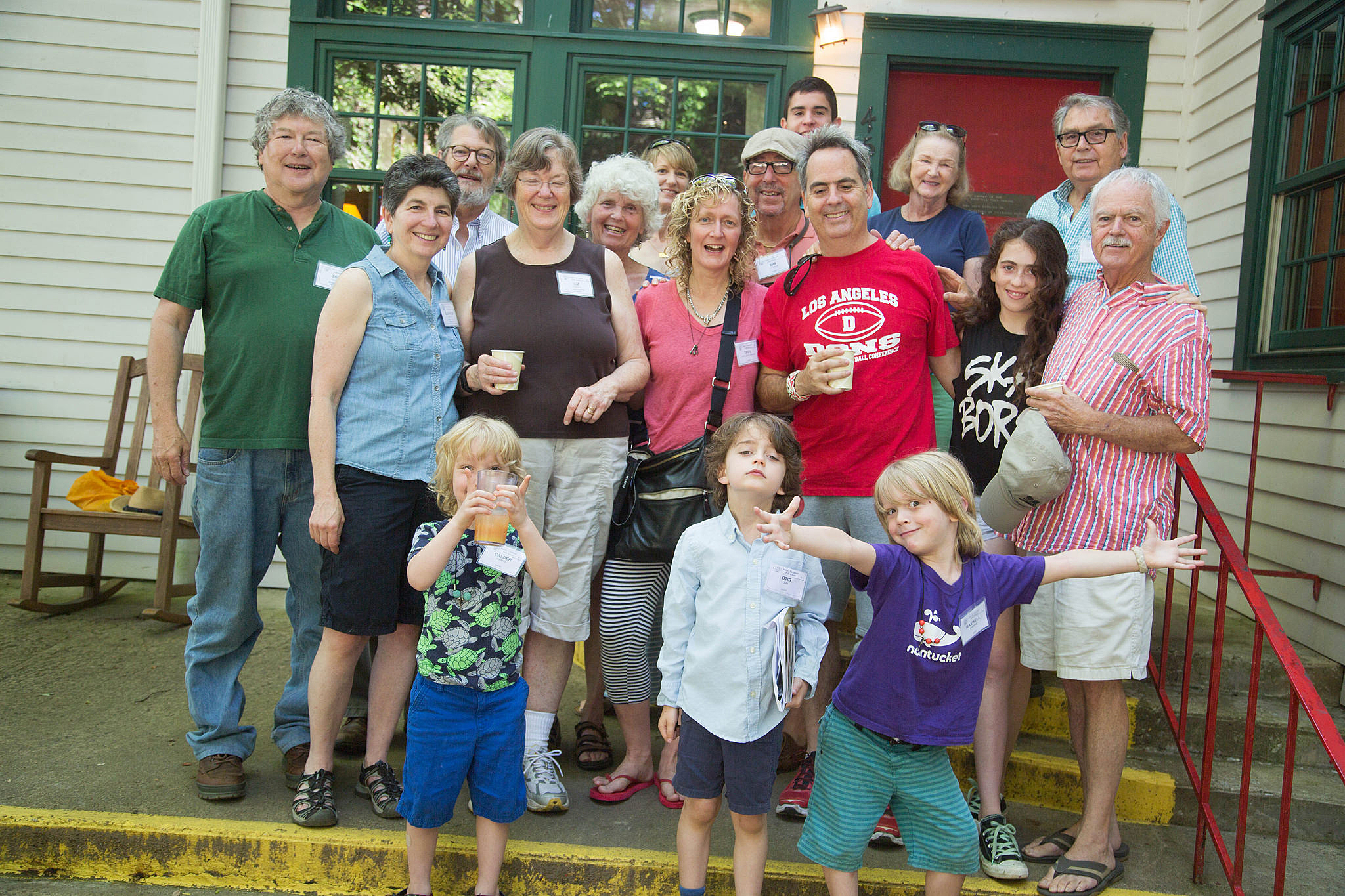
The Olive Dame family gather for a quick photo in front of Keith House. Kids, standing left to right: Calder LaFollette Huck, Otis Cary, Maxwell LaFollette Huck. Second row, left to right Toby Sackton (married to Marcia), Elisabeth Sackton (married to Liz Coolidge), Liz Coolidge, Tavia LaFollette, Donick Cary, Amadi Cary, Richard Cary. Back row, left to right: Jan Davidson, Marcia Butman, Kim Huffman Cary, Kim Huffman, Josh Wipf (behind Kim), Jeanne Huffman, Lorin Cary.[/caption]
Members of Folk School founder Olive Dame Campbell's family gathered here during a recent weekend in June (12-14) for a mini-family reunion and a chance to experience the Folk School. While some members took classes in Photography, Spinning, and Gardening, others spent time on campus, browsing the school’s archives, visiting and meeting with Folk School staff and community members. I recently caught up with Marcia Butman (Olive was Marcia's Great Aunt) and Tavia LaFollette Zabriske (Olive was her Great Great Aunt) to ask them about their thoughts about the Folk School and to learn more about their family’s connection to Olive.
KG: Tell us why you decided to gather your family here for a mini-reunion at the Folk School.
MB: I had been reading Olive’s diary and sending it out on a daily basis to a large group of extended family, calling it “Dame A Day.” I sent out the year of Olive’s baby Jane’s life, from April 1912 through January 1913. I think this really involved our family in Olive’s life, and we began talking about holding a reunion at the school. Toby and I visited the school twice in the past ten years and I also visited with my daughter for the day when we were at The Great Smokies. We also hosted Jan and Nanette in Nantucket when they came to do a talk and concert. Our relationship to them made me feel it would be possible to arrange a family visit. Jan and Nanette are such special and wonderful welcoming people, they were very positive and enthusiastic about the idea of a reunion and I knew they would help us arrange a reunion. And they did so much to make the weekend great.
However, it seemed very difficult to come up with a date. Then Lorin Cary, whose brother, Richard lives in Asheville, said he was planning to visit on Richard June 12, after his grandson’s graduation from High School in Toledo, and both of them were going to go visit the school. Once one person said they were definitely coming, it all fell into place. (Olive was also Great Aunt to both Lorin and Richard. They are the sons of Olive's niece June and Harry Cary, who lived and worked at the Folk School from 1938-41).
TLZ: I have grown up with stories and artifacts. This was an opportunity to learn and share with family, first hand, in a place that has captured and treasures cultural heritage. What a unique opportunity!
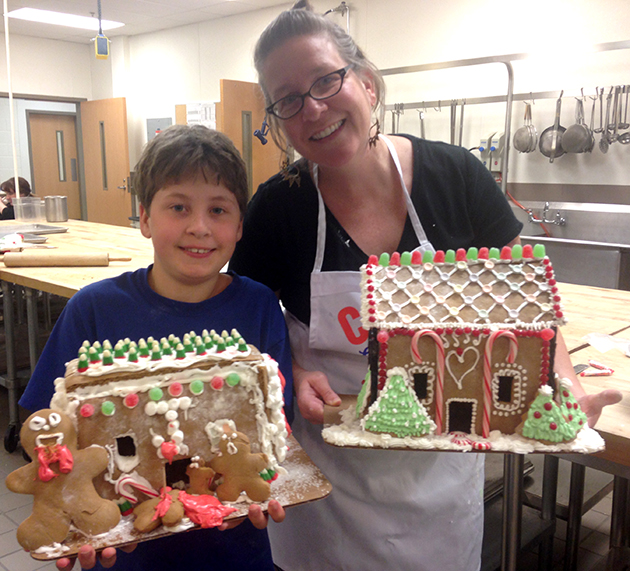 Jodi and her son Jasper show off their gingerbread house creations.[/caption]
Jodi and her son Jasper show off their gingerbread house creations.[/caption]
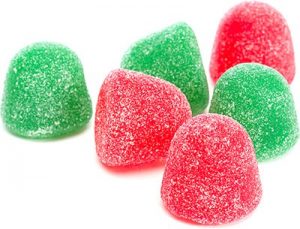 CP: What do you like about gingerbread houses?
JR: The first time I ever made a gingerbread house, I was enchanted. I really felt like I wanted to become miniature and live inside the house! It feels completely magical and fantastical to create a little home out of candy and sweet gingerbread, and the smells, and textures (and of course, tastes, because there’s always scrap pieces of gingerbread that need to be eaten!) are uniquely pleasurable to the senses.
[caption id="attachment_15381" align="alignright" width="226"]
CP: What do you like about gingerbread houses?
JR: The first time I ever made a gingerbread house, I was enchanted. I really felt like I wanted to become miniature and live inside the house! It feels completely magical and fantastical to create a little home out of candy and sweet gingerbread, and the smells, and textures (and of course, tastes, because there’s always scrap pieces of gingerbread that need to be eaten!) are uniquely pleasurable to the senses.
[caption id="attachment_15381" align="alignright" width="226"]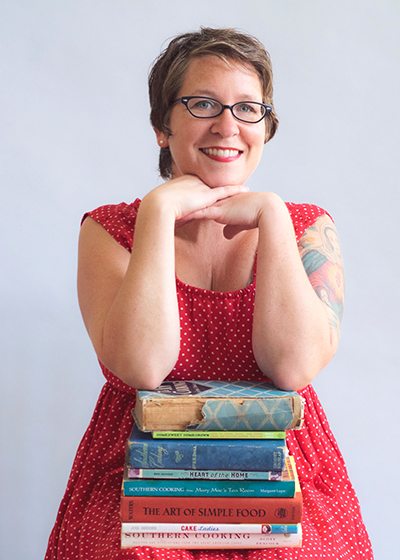 Photo by Nicole McConville[/caption]
CP: Do you have to be architecturally skilled to make a good gingerbread house? Who is the ideal student for your class?
JR: You do not have to be architecturally skilled to build a gingerbread house! The icing and the candy make it very forgiving. Like most things worth doing, though, it does take time. We will spend a good amount of time in the planning phase, cutting and measuring templates to create the right sizes for the pieces. I also always like to bake extra pieces, in case something breaks or bakes wonky.
CP: Have you ever participated in the National Gingerbread house Competition is at the Grove Park Inn? Did the proximity of this annual event in Asheville influence your interest in gingerbread house making?
JR: It has always been my dream to enter a house into the competition at the Grove Park Inn, though up until now I have been too busy with my business, Short Street Cakes, to seriously consider it. But now that I have sold my business to my employee, this just might be the right time!
Photo by Nicole McConville[/caption]
CP: Do you have to be architecturally skilled to make a good gingerbread house? Who is the ideal student for your class?
JR: You do not have to be architecturally skilled to build a gingerbread house! The icing and the candy make it very forgiving. Like most things worth doing, though, it does take time. We will spend a good amount of time in the planning phase, cutting and measuring templates to create the right sizes for the pieces. I also always like to bake extra pieces, in case something breaks or bakes wonky.
CP: Have you ever participated in the National Gingerbread house Competition is at the Grove Park Inn? Did the proximity of this annual event in Asheville influence your interest in gingerbread house making?
JR: It has always been my dream to enter a house into the competition at the Grove Park Inn, though up until now I have been too busy with my business, Short Street Cakes, to seriously consider it. But now that I have sold my business to my employee, this just might be the right time!





